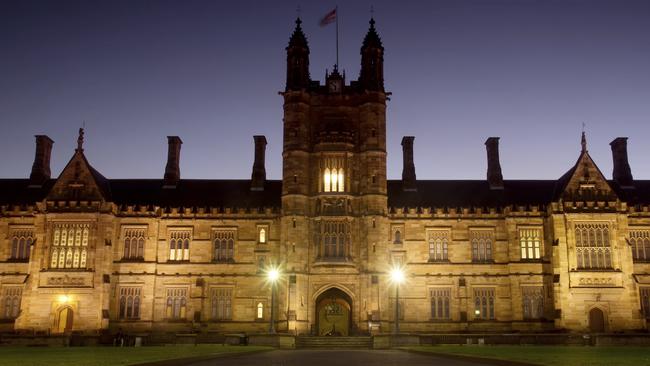
Exhibit A is the University of Sydney, which last week said its 2020 “underlying net loss” was $2.2m. “This means that in real terms we were able to roughly break even,” vice-chancellor Stephen Garton said.
You would therefore assume that COVID had pushed the university into deficit last year. No politically awkward surplus to see here, right? Wrong, actually.
READ MORE:Education exports could halve | Frustrated students turn away | UNSW escapes big COVID loss | John Dewar to head Universities Australia |
Garton also said the university’s “reported operating surplus” last year would be $106.6m. By that he meant when the university’s 2020 financial statements are released the “net result before income tax of continuing operations” — the figure conventionally taken to be the surplus or deficit — will be a surplus of more than $100m.
Why is Sydney bowing to this palaver about “underlying” and “real” results, which have no meaning under the accounting standards that universities, by law, are required to adhere to?
It’s because universities have a strong incentive to make their 2020 financial outcomes appear worse than they are.
It’s tough to justify job losses and painful cutbacks when the results are looking OK. Furthermore, the Morrison government delights in pointing to the growing number of universities reporting surpluses last year as evidence that its funding squeeze on higher education is justified.
Sydney is not the only university to reinterpret its financial results in this way. A close reading of media releases from the University of Melbourne and the Australian National University shows they also are headlining worse financial outcomes for last year than the ones arrived at under the usual definitions.
Melbourne said its “operating surplus” was about $8m, while further down its media release acknowledges an “overall reported bottom line” of about a $180m surplus. ANU said its “operating deficit” was $162.4m while further down its release said the “reported accounting loss” was $17.7m
Notice the confusion in terms. Sydney used “operating” to describe the actual result, while Melbourne and ANU used “operating” to describe the massaged result. That’s what happens when you arbitrarily give words new meanings.
What the three universities have in common is that — in arriving at their preferred measure — they left out some revenue items that were earmarked to a purpose, such as gifts, certain research grants and investment income, and insurance payments. They were trying to make the point that much of their revenue could not be used, even if they had wished, to save jobs or avoid other spending cuts.
So why not say it plainly, rather than try to play with definitions?
Now it’s time to come to universities’ defence. Even though most universities are reporting surpluses for last year, this doesn’t mean their financial troubles are behind them. As long as international student can’t enter Australia, their revenues will continue to be squeezed.
Looked at in that light, the university surpluses last year are not evidence of bad management — they are evidence of prudent and careful preparation for what’s likely to hit them this year. There’s actually no need to massage the truth.




Have university leaders morphed into public company chief executives? This year, in the wake of COVID-19, some vice-chancellors have suddenly found the need to massage their financial results. Unusually, we are hearing a university highlight words such as “underlying” and “real” in describing a budget outcome.